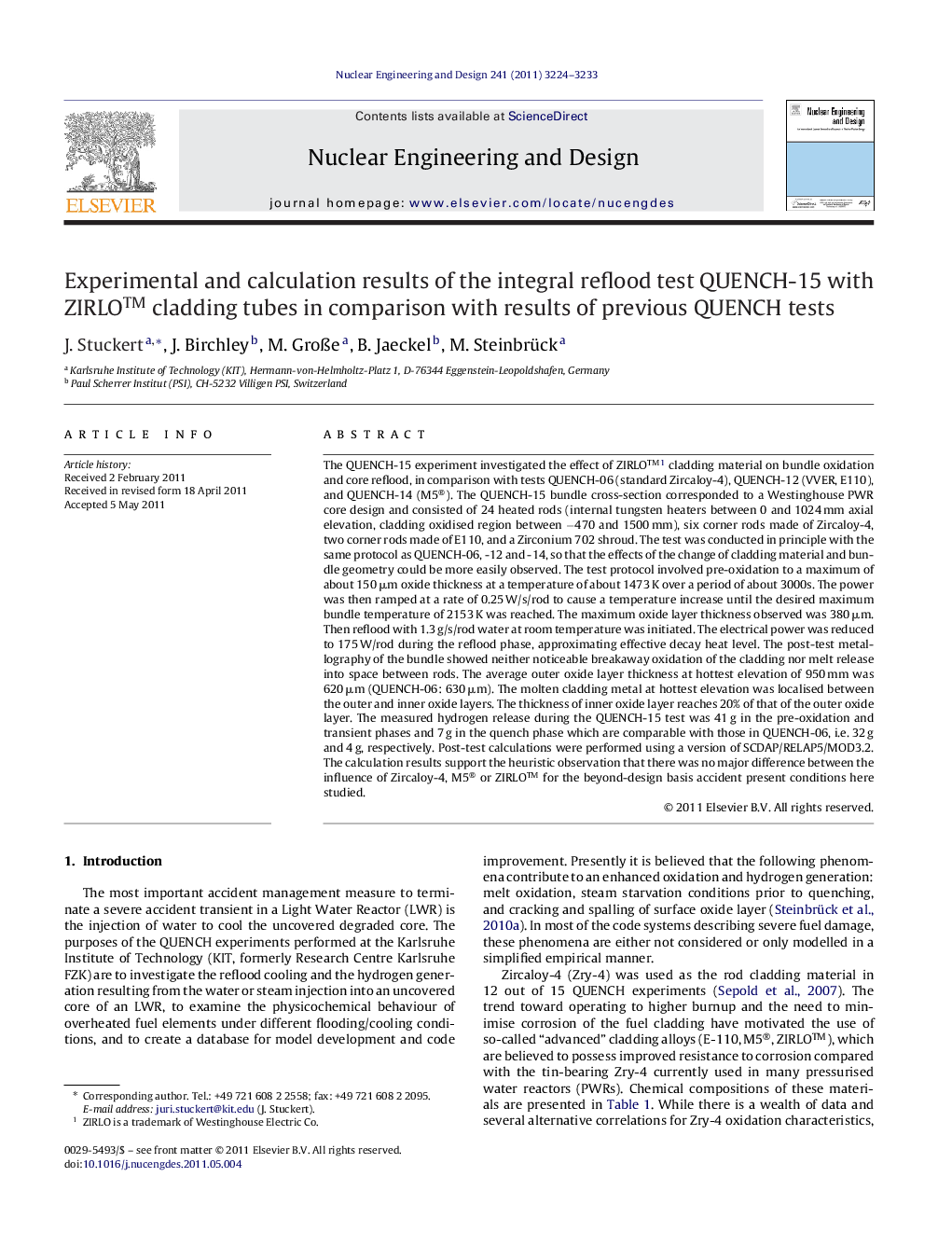| کد مقاله | کد نشریه | سال انتشار | مقاله انگلیسی | نسخه تمام متن |
|---|---|---|---|---|
| 297441 | 511756 | 2011 | 10 صفحه PDF | دانلود رایگان |

The QUENCH-15 experiment investigated the effect of ZIRLO™1 cladding material on bundle oxidation and core reflood, in comparison with tests QUENCH-06 (standard Zircaloy-4), QUENCH-12 (VVER, E110), and QUENCH-14 (M5®). The QUENCH-15 bundle cross-section corresponded to a Westinghouse PWR core design and consisted of 24 heated rods (internal tungsten heaters between 0 and 1024 mm axial elevation, cladding oxidised region between −470 and 1500 mm), six corner rods made of Zircaloy-4, two corner rods made of E110, and a Zirconium 702 shroud. The test was conducted in principle with the same protocol as QUENCH-06, -12 and -14, so that the effects of the change of cladding material and bundle geometry could be more easily observed. The test protocol involved pre-oxidation to a maximum of about 150 μm oxide thickness at a temperature of about 1473 K over a period of about 3000s. The power was then ramped at a rate of 0.25 W/s/rod to cause a temperature increase until the desired maximum bundle temperature of 2153 K was reached. The maximum oxide layer thickness observed was 380 μm. Then reflood with 1.3 g/s/rod water at room temperature was initiated. The electrical power was reduced to 175 W/rod during the reflood phase, approximating effective decay heat level. The post-test metallography of the bundle showed neither noticeable breakaway oxidation of the cladding nor melt release into space between rods. The average outer oxide layer thickness at hottest elevation of 950 mm was 620 μm (QUENCH-06: 630 μm). The molten cladding metal at hottest elevation was localised between the outer and inner oxide layers. The thickness of inner oxide layer reaches 20% of that of the outer oxide layer. The measured hydrogen release during the QUENCH-15 test was 41 g in the pre-oxidation and transient phases and 7 g in the quench phase which are comparable with those in QUENCH-06, i.e. 32 g and 4 g, respectively. Post-test calculations were performed using a version of SCDAP/RELAP5/MOD3.2. The calculation results support the heuristic observation that there was no major difference between the influence of Zircaloy-4, M5® or ZIRLO™ for the beyond-design basis accident present conditions here studied.
► Neither breakaway effect nor melt relocation was observed during a test with the ZIRLO™ bundle flooded at 2100 K.
► A noticeable factor of cladding oxidation can be oxide growth at inner cladding surface.
► Correlations developed for Zircaloy-4 are able to well reproduce oxidation kinetics of ZIRLO™.
Journal: Nuclear Engineering and Design - Volume 241, Issue 8, August 2011, Pages 3224–3233